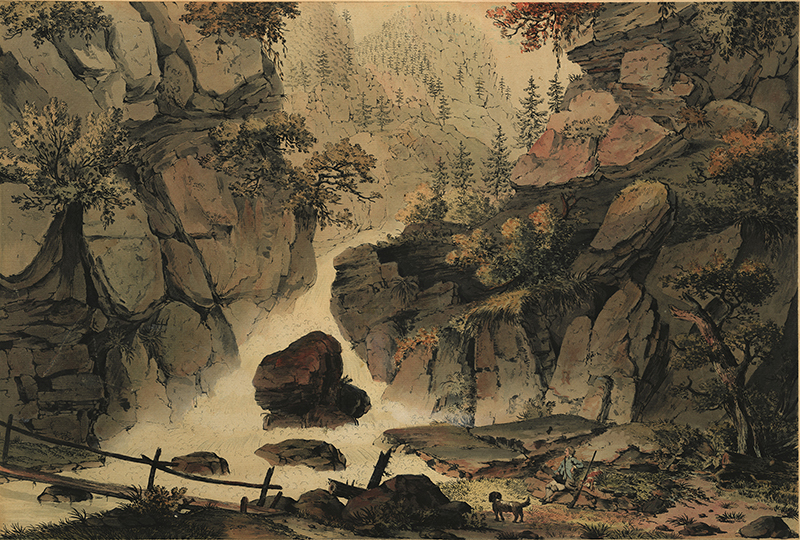
19th, 20th & 21st Century Fine Prints
707-546-7352 · fax 707-546-7924 · web: www.annexgalleries.com · email: artannex@aol.com
Vue de la Chute d l'Arve près de Salenche (View of the Arve Falls near Salenche) by Cornelis Apostool

Vue de la Chute d l'Arve près de Salenche (View of the Arve Falls near Salenche)
Cornelis Apostool
Vue de la Chute d l'Arve près de Salenche (View of the Arve Falls near Salenche)
Cornelis Apostool
1762 - 1844 (biography)Done after the drawing Apostool did in 1785. An impression in the British Museum bears the artist's name in the lower right margin, in ink, as "C. Apostool f." An on-line description of this work states: "This etching enhanced with color was published in England in 1791, based on a drawing made by Cornelis Apostool in 1785. He trained as a painter and draftsman and worked notably for Albanis-Beaumont. Dutch, he also continued his career as a diplomat and then [first] director of the Royal Museum [Rijksmuseum] in Amsterdam."
"This image is the only one known which bears witness to his trip to Chamonix. It represents the fall of the Arve. This place is located between Passy and Cedde, at the entrance to the valley...The artist represents the river with its strong flow and tumultuous course, surrounded by the the high rocky escarpments punctuated by a few trees and shrubs. In the foreground a small, relatively basic bridge allows you to cross the river."
"The landscape is animated by the presence of a hunter with his dog. The man is recognizable by his high boots, his hat, his long coat and his bag slung over his shoulder, but above all by his rifle and the dead rabbit placed next to him."
Among his achievments at the Rijksmuseum was the recovery of several pieces of Dutch paintings stolen by the French during their occupation of the Netherlands (1789-1802). He located the works in France, returning them to the Netherlands in 1816.


